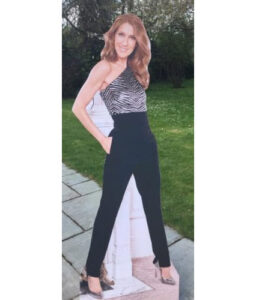Cardboard cutouts are charming for so many reasons. They can evoke nostalgia, are excellent marketing props, and offer fun for all types of events. But how did they become so popular?
What began as a clever promotional gimmick in the early 20th century has evolved into a customisable phenomenon, with everything from life-size celebrity standees to bespoke wedding props and party decorations.

This is the story of how cardboard cutouts went from shopfronts to centrepieces at special events across the UK.
Origins: The Birth of the Cardboard Standee
The earliest use of cardboard cutouts can be traced back to the 1910s and 1920s. During this time, brands in the United States and the UK began experimenting with life-sized images printed on stiff paperboard.
These promotional tools were usually placed in shop windows or the aisles of stores, featuring attractive models, movie stars or cartoon characters selling everything from cigarettes to cinema tickets.
Materials were primitive by today’s standards: often thick poster board or corrugated cardboard. Designs were also pretty one-dimensional. But they made an immediate impact. Shoppers were drawn to lifelike representations of familiar faces, and retailers quickly saw their potential as ‘silent salespeople’.
Hollywood’s Influence: The Stars Turned Into Cutouts
By the 1930s and 1940s, cardboard cutouts had found their true muse: Hollywood. With the explosion of the film industry came the need to advertise stars and upcoming movies. Life-size cutouts of actors such as Marilyn Monroe, Humphrey Bogart and Audrey Hepburn began popping up in cinemas and on high streets.
These standees were especially popular in the golden age of cinema, offering fans a chance to ‘meet’ their idols up close. Often placed near cinema lobbies or box offices, they served as eye-catching props for film promotions, drawing in moviegoers and building hype long before digital trailers existed.
The Retail Boom
Throughout the 1950s and 60s, the rise of consumer culture meant cardboard cutouts became even more prevalent in shops. Brands from Coca-Cola to Kellogg’s used character-based displays to bring their packaging to life.
In supermarkets, cutouts took on new forms: some were interactive, others included shelving for featured products.
Technological Advances: Digital Printing and Personalisation
The late 20th century saw a revolution in how cardboard cutouts were produced. As digital printing improved, it became easier and cheaper to create photo-realistic prints on durable materials. Suddenly, customisation was within reach not just for corporations, but for individuals.
Personalised cardboard cutouts, once a novelty, became mainstream. Whether it was a cutout of the bride and groom for a wedding, a birthday party mascot, or a novelty gift, consumers began embracing this once-commercial medium for personal use.
The Cardboard Cutout Company, for instance, has been at the forefront of making bespoke cutouts available to anyone with a good photo and a few clicks.
Cardboard in the Spotlight: Cultural and Viral Moments
The 2000s brought a new wave of interest in cardboard cutouts thanks to pop culture and the internet. TV shows and sports fans began using them in increasingly creative ways, from props for pranks to audience fillers.
During the COVID-19 pandemic, cardboard cutouts made headlines globally. With fans unable to attend live sporting events, clubs began placing life-size fan cutouts in stadium seats. This symbolic gesture not only brought a sense of connection to viewers but demonstrated the versatility and enduring appeal of cardboard figures.
Cutouts in Modern Life
Today, cardboard cutouts are as likely to appear at a child’s birthday party as at a corporate trade show. Their uses have expanded into:
- Weddings. Custom cutouts of the happy couple, themed characters, or photo booth props.
- Corporate Events. Branded mascots, CEO standees, or product displays.
- Home Decor. Humorous additions to home offices or garden parties.
- Education. Teachers use them for classroom engagement or historical recreations.
This return to popularity is supported by environmental advances too. Most modern cutouts are printed on recyclable, so they come guilt-free.

Why Cardboard Cutouts Remain Effective
Despite being over a century old, cardboard cutouts continue to capture attention in ways digital media often can’t. They’re brilliant for Instagram photos, life-size, and visually striking: qualities that help you stand out in busy environments.
For brands, they offer a cost-effective way to connect with customers in the real world. For individuals, they’re a way to bring fun and flair to life’s big (and small) moments.
A Flat Format with Lasting Impact
From their early days in shop windows to their modern popularity as centrepieces at weddings, cardboard cutouts have stood the test of time. Their charm lies in their simplicity, customisability and ability to make an instant impact.
At The Cardboard Cutout Company, we honour this legacy by combining tradition with innovation: offering handcrafted quality with state-of-the-art technology.
Whether you want a cutout of a famous footballer, your pet, or yourself, we bring your vision to life, one sheet of cardboard at a time.
Find out more about our cardboard cutouts. Or contact us to bring your vision to life.
